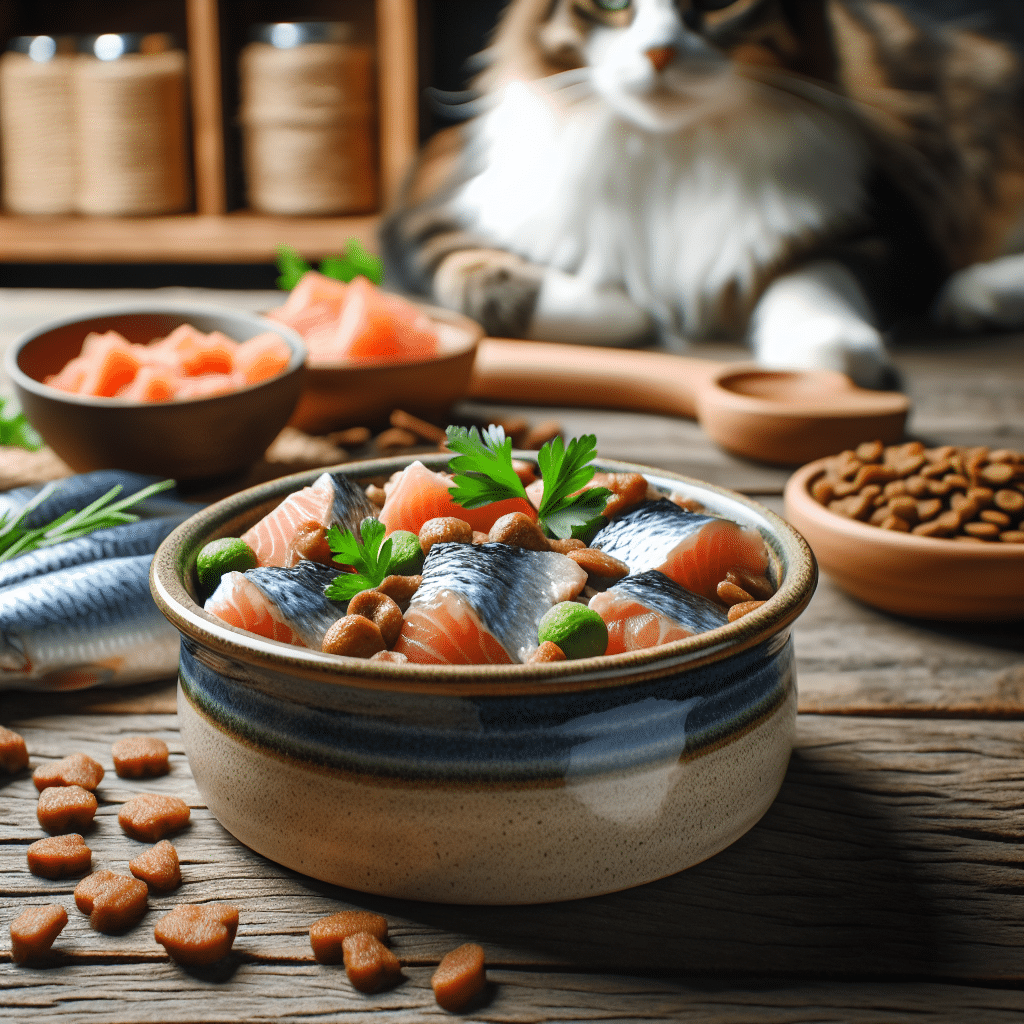Why Choose Homemade Cat Food with Fish?
Cats are obligate carnivores; their diet must primarily consist of meat to thrive. Homemade cat food allows you to control the ingredients, ensuring fresh, high-quality nutrition. Fish is a fantastic source of protein and omega-3 fatty acids, which contribute to healthy skin, shiny coats, and optimal heart health. Additionally, using fish can introduce a variety of flavors and textures that your feline friend will love.
Key Nutritional Requirements for Cats
Before diving into recipes, it’s essential to understand feline nutrition. Cats require a balance of proteins, fats, vitamins, and minerals. Here are some key nutritional components:
- Protein: Essential for growth and maintenance. Fish offers high-quality protein, crucial for cellular function and muscle development.
- Fats: Provide energy and support cell function. Omega-3 and Omega-6 fatty acids in fish promote heart and brain health.
- Vitamins: Important for various bodily functions. Vitamins A, D, E, and B vitamins are crucial for overall health.
- Minerals: Such as calcium and phosphorus, are vital for bone health and metabolism.
Simple Fish Recipes for Homemade Cat Food
1. Salmon & Sweet Potato Delight
Ingredients:
- 1 cup cooked salmon (skinless, boneless)
- 1/2 cup cooked sweet potato (mashed)
- 1/4 cup peas (cooked and mashed)
- 1 tablespoon fish oil (optional)
- A pinch of catnip (optional)
Instructions:
- In a mixing bowl, combine the cooked salmon, mashed sweet potato, and peas until well blended.
- Drizzle fish oil over the mixture to add additional omega-3 fatty acids.
- Optionally, sprinkle a pinch of catnip for flavor enhancement.
- Serve slightly cooled or at room temperature.
2. Tuna & Quinoa Bowl
Ingredients:
- 1 can of tuna in water (drained)
- 1/2 cup cooked quinoa
- 1/4 cup carrots (finely chopped and cooked)
- 1 teaspoon olive oil
- A sprinkle of ground flaxseed (for additional omega-3)
Instructions:
- In a bowl, combine the drained tuna and cooked quinoa.
- Add the finely chopped cooked carrots and olive oil; mix thoroughly.
- Sprinkle ground flaxseed to up the nutritional profile.
- Allow the mixture to cool before serving.
3. Sardine Cat Treats
Ingredients:
- 1 can of sardines in water (drained)
- 1/3 cup whole wheat flour (or a grain-free alternative)
- 1 egg
- 1 tablespoon dried catnip
- 2 tablespoons vegetable broth (low sodium)
Instructions:
- Preheat your oven to 350°F (175°C).
- In a mixing bowl, combine sardines, flour, egg, catnip, and broth until a dough forms.
- Roll the dough into small balls and place them on a baking tray lined with parchment paper.
- Bake for 10-12 minutes until firm and lightly golden.
- Once cooled, serve as a treat.
4. Cod & Spinach Medley
Ingredients:
- 1 cup cooked cod (flaked)
- 1/2 cup cooked spinach (finely chopped)
- 1/3 cup brown rice (cooked)
- 1 tablespoon pumpkin puree (not pie filling)
- A dash of salt (optional, use sparingly)
Instructions:
- In a large bowl, combine the cod, spinach, brown rice, and pumpkin puree.
- Mix thoroughly until all ingredients are integrated.
- If your cat prefers, you can add a tiny amount of salt for flavor, but it’s best to avoid excessive salt in their diet.
- Serve warm.
Precautions When Making Cat Food
-
Consult Your Vet: Always talk to your veterinarian before making significant changes to your cat’s diet, especially if they have health issues.
-
Balance Nutrition: Ensure you provide a balanced diet in terms of protein, fats, and other nutrients. While fish is a great protein source, it should be complemented with other essential ingredients.
-
Avoid Harmful Ingredients: Be cautious of ingredients like onions, garlic, and certain spices, which are toxic to cats.
-
Storage: Store leftovers in airtight containers in the refrigerator and consume them within 2-3 days.
Serving Homemade Cat Food
When serving homemade cat food, consider your cat’s dietary needs and age. Kittens, adults, and senior cats have different nutritional requirements. Additionally, adjust portions based on your cat’s weight and activity level. Always provide fresh water alongside their meals.
Benefits of Homemade Cat Food
- Control: You decide what goes into your cat’s food, which allows you to avoid fillers and preservatives.
- Freshness: Using fresh ingredients guarantees that your cat is not consuming outdated or expired foods.
- Variety: You can create a rotating menu to keep mealtime exciting for your cat.
Conclusion
Homemade fish-based cat food can provide high-quality nutrition and ensure your feline friend enjoys every bite. Fish is not only tasty for cats but also an excellent source of vital nutrients. With simple, easy-to-follow recipes, you can whip up meals that your kitty will love, promoting better health and well-being. Experiment with different combinations of fish and recommended feline-friendly ingredients to find the perfect recipes for your furry companion!
